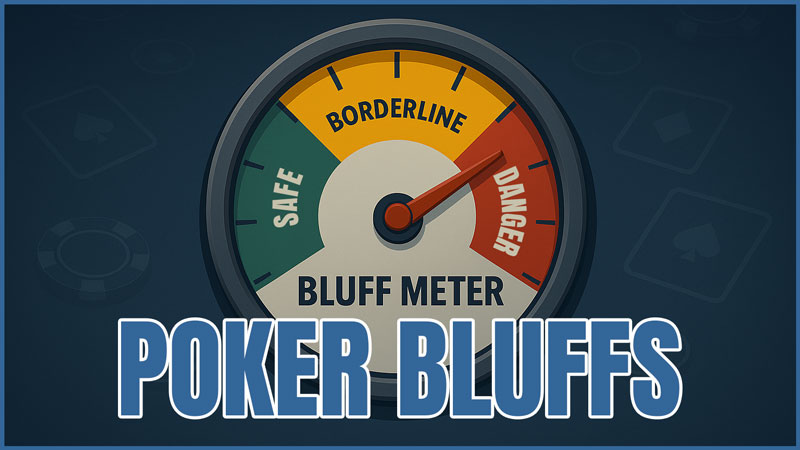Poker Bluffs: Bluffing your way through Poker
Bluffing is often seen by casual observers as a vital part of poker, but in practice it is used less frequently than many might expect.
Bluffing can add spice to the game and introduce an additional layer of strategic depth to poker, changing how hands are played and how opponents are read.
Most strong players understand when and how to incorporate bluffing as part of a balanced strategy.
The Fine Art of Bluffing
A player bluffs when he is otherwise unlikely to win a particular hand, or when he wants to force other people off the hand. A skilful player figures out the profitability of a bluff by weighing up the odds of a winning bluff against risk resulting from the sizes of the bet that he has to commit into the pot. His chances improve if he can more accurately predict whether or not his opponents will give up, believing his bluff.
Some important points you should bear in mind before making a bluff are:
- The type and number of people you are playing against
- The image you have at that particular table
- Your ability to predict your opponents’ behaviour, the board, and your current position.
Let us consider these points in more detail:
Opponents
If your opponents are weak and will call anything blindly, avoid bluffing. Your rival needs to have the sense to fold! And if you are playing against more than three players; your bluff is less likely to work.
Table Image
Your table image is relevant too. If you have been bluffing unsuccessfully, and your opponents have seen your previous bluffs, then any further attempt at bluffing is more likely to be called.
The reverse psychology here also works though – if you have a tight table image, and your opponents haven’t seen you try to bluff, then you will get a lot more respect for your bets and will be able to introduce a number of bluffs to table and have a better chance of getting away with them.
Other Factors
If you’re a skilful, experienced player, you’ll know when and how to bluff – not an easy thing to learn. Bluffing is generally more effective on boards with limited drawing potential, where opponents are less likely to improve their hands. Uncoordinated boards where there is a single scare card that you may represent have a good likelihood of helping you carry off a successful bluff.
Be wary of big pots – your fellow players will be more likely to call your bluff in these cases – even though you will win more in such pots. Judge well!
A player in late position will have more information about his rivals’ hands as they are acting after everybody else and thus be able to better judge whether the situation offers an opportunity to bluff.
There are other techniques you can use while bluffing. Sometimes you can use a half-way bluff or sometimes known as a semi-bluff, when your hand still has possibilities or outs to win the hand, but you also give yourself a second chance to take the hand down there and then with a bluff. This is also a good way to mix up your play as it will confuse the others about your bluffing behaviour, too.
It’s usually unwise to try and out-bluff a bluffer, and bluffing into a large field of players is rarely effective. Remember as the old adage says, “it is impossible to fool all the people all the time”. Learn how others play, and use it to your advantage to pick your spots.
Think carefully about all these points before deciding to bluff, and you’ll be better positioned to choose more suitable spots and potentially improve your results over time.
